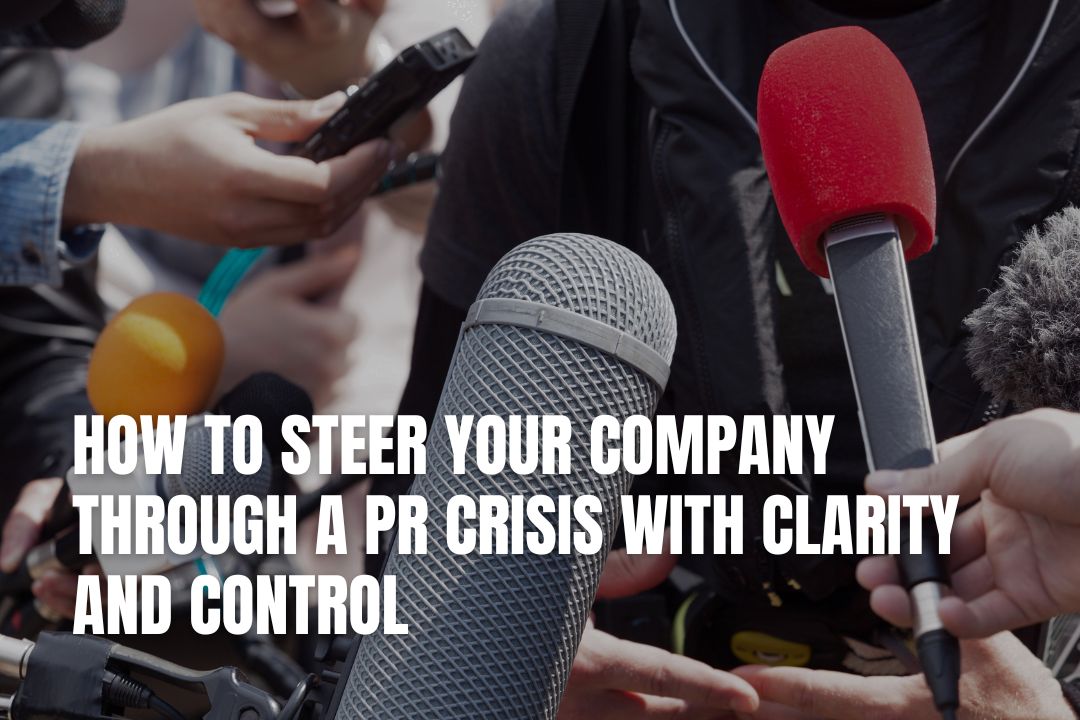
A public relations crisis can strike any business without warning. Whether caused by a social media backlash, product recall, or leadership controversy, a PR crisis tests a company’s ability to stay calm and communicate effectively. How the response is handled often determines whether the situation fades quickly or leaves lasting reputational damage. Preparation, honesty, and empathy are the cornerstones of a strong recovery.

Timing matters. The first hours of a crisis shape public perception, so silence or delay can suggest confusion or guilt. However, rushing to respond without verified facts can make things worse. The best approach begins with gathering accurate information from all relevant departments and confirming what happened. Once the scope is clear, issue a concise initial statement that acknowledges the issue and promises updates. This shows responsibility without speculation or defensiveness.
Conflicting messages from different company representatives can create chaos. Establish a central communications team and designate one spokesperson to address all external inquiries. Align internal communications with the same key points to avoid confusion among employees. Everyone should know what the company’s position is, what actions are being taken, and how to answer basic questions. Consistency helps maintain credibility.
Trying to conceal or minimise the issue nearly always backfires. Customers and investors expect openness. Share what you know, explain how the company plans to address the situation, and take responsibility if mistakes were made. Even partial transparency, such as outlining a timeline for investigation, builds more trust than silence. Demonstrating empathy toward affected customers or employees reinforces the company’s commitment to doing the right thing.
Social media amplifies both the problem and the response. Monitor platforms closely to understand how the public is reacting. Respond politely and factually to genuine concerns but avoid arguing with critics. A professional tone helps defuse tension, while reactive or emotional posts can inflame the situation further. If misinformation spreads rapidly, a pinned statement or official update can clarify the facts and show that the company is listening.
Employees experience the ripple effects of a PR crisis as much as customers do. Keeping staff informed prevents rumours and ensures they represent the company accurately. Internal updates should include talking points and reassurance that leadership is handling the issue. Employees who feel supported are more likely to remain calm and aligned with company values.
Once the immediate crisis passes, review what happened with a critical eye. Evaluate the speed of your response, the clarity of communication, and any internal breakdowns. Create or refine a crisis communication plan based on those lessons. Many businesses partner with a brand monitoring agency to detect early warning signs, track public sentiment, and prevent similar incidents in the future.
A PR crisis does not have to define a company’s reputation. The best recovery strategies show that mistakes can be corrected, trust can be rebuilt, and strong leadership endures even under pressure. Look over the infographic below for more information.

You should aim to respond within the first few hours to help control the narrative. However, it is critical to gather the facts first. A rushed, inaccurate statement can cause more harm than a slight delay for verification.
Consistent messaging prevents confusion and maintains your company's credibility. When everyone from the spokesperson to your customer service team is aligned, it shows that you have a clear, controlled handle on the situation.
Absolutely. Transparency is key to rebuilding trust. Admitting to mistakes, explaining how you are fixing the problem, and showing empathy for those affected demonstrates integrity and a commitment to doing the right thing.
Monitor social media channels closely to gauge public sentiment. Respond to legitimate concerns with politeness and facts, but avoid getting into arguments. Use a pinned post or official updates to provide clear, correct information.
Keep your employees in the loop with regular internal updates and provide them with clear talking points. When your team feels informed and supported by leadership, they can remain calm and continue to represent the company professionally.
Your first step should be to conduct a thorough review of how the situation was handled. Analyse what went well and what could be improved. Use these insights to strengthen your crisis communication plan. Many businesses, including clients of Beacon Inside, find this process essential for future preparedness.